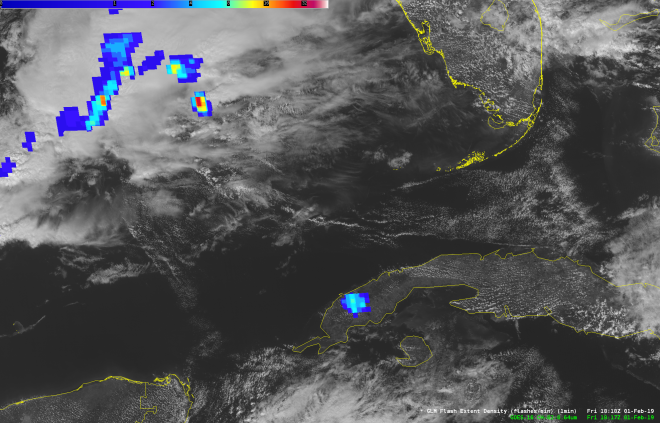A meteor exploded over western Cuba on February 1, 2019, and it delivered an impressive light show. The event was captured by numerous ground-based cameras. It was also spotted from space.

Researchers from the Cooperative Institute for Meteorological Satellite Studies wrote a blog post showing a series of images and data from the event, including the animation above. It was composed from false-color images gathered by NOAA’s GOES-16 satellite. (NASA builds GOES satellites for NOAA.) The dark blue pixels moving toward the northeast appear to be the signature of a debris cloud drifting in the atmosphere after the meteor exploded. A close look at visible imagery from GOES-16 reveals a shadow apparently cast by the debris cloud.

Meanwhile, scientists at NASA’s Short-term Prediction Research and Transition Center (SPoRT) reported signs of the meteor flash in an image acquired by the Geostationary Lightning Mapper (GLM). The meteor flash appears in this image as blue pixels over Cuba. (The blue in the top-left corner is lightning activity over the ocean.)
The meteor was notably smaller than the rock that exploded in February 2013 over Chelyabinsk, Russia. That event injected hundreds of tons of dust into the stratosphere and set the stage for scientists to directly study the plume’s long-term evolution in Earth’s atmosphere.



